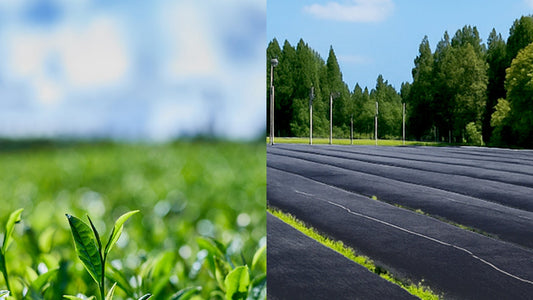"Ichigo Ichie" — A Once-in-a-Lifetime Encounter
Among the many expressions associated with the Japanese tea ceremony, none is more revered than Ichigo Ichie — “one time, one meeting.” These profound words were spoken by Sen no Rikyū, the legendary tea master who elevated the practice of chanoyu into the refined art of chado (the Way of Tea), and whose influence helped shape it into a cultural treasure recognized around the world.
Today, many interpret Ichigo Ichie as simply meaning, “this encounter will only happen once.” Yet its deeper essence lies in the teaching: “Every tea gathering is a once-in-a-lifetime meeting—therefore, approach it with sincerity and wholehearted devotion.” It is this spirit—of earnest presence and heartfelt sincerity—that Sen no Rikyū sought to embody through the Way of Tea. More than etiquette or ritual, it is this very mindset that he hoped to pass down to future generations.
From chanoyu to chado — the journey of Japanese tea, exploring how chanoyu, the art of tea preparation, evolved into chado, the Way of Tea, and ultimately became the beloved Japanese tea we know and enjoy today, marks the beginning of an epic passage through the rich, storied history of Japanese tea.
■ From Aristocratic Tea Salons to the Playful World of Tea Kabuki
By the 14th century, the enjoyment of green tea (matcha) had spread beyond temples, taking root among the aristocracy and samurai class.
In refined spaces akin to “tea salons,” hosts would display imported Chinese artworks, elegant vases, and incense burners imbued with exquisite fragrances. This cultural practice, known as kaisho no cha—tea gatherings where guests were entertained with poetry and refined hospitality—became a fashionable expression of aesthetic sophistication.
Around the same time, tōchakai—competitive tea gatherings where participants tasted various types of matcha and guessed their origin—began to gain popularity. These events gradually evolved into extravagant affairs within noble tea salons, featuring not only tea, but also alcohol, elaborate meals, and even gambling.
So indulged had the elite become in these sophisticated diversions that official bans were eventually imposed, revealing just how deeply society had fallen under tea’s spell. It was the spiritual reconnection between tea and Zen that ultimately brought an end to the unrestrained excesses of the tōchakai.
■ The Spiritual Unity of Tea and Zen — Wabi-cha
From the opulence of aristocratic tea salons and the playful indulgence of tōchakai gatherings, tea culture shifted toward a quieter, more introspective form: wabi-cha.
Practiced in an intimate four-and-a-half tatami mat room, this meditative style of tea preparation emphasized simplicity, inner stillness, and spiritual refinement—much like Zen meditation. Spreading rapidly across Japan, wabi-cha transformed into chanoyu, a ritual that not only celebrated tea, but also came to embody the refined aesthetic sensibilities of the Japanese spirit.
From the 16th century onward, Japan’s ruling elites came to deeply cherish the Way of Tea. It was during this time that Sen no Rikyū—now the most celebrated figure in the history of Japanese tea—served as the chief tea master, overseeing the practice of chanoyu and nurturing a generation of devoted disciples.
Among his teachings on the proper spirit with which one should conduct a tea gathering emerged the now-iconic phrase ichigo ichie—“one time, one meeting.” Thanks to one disciple who carefully recorded these words, ichigo ichie transcended the world of tea and entered modern life, where it continues to embody the Japanese spirit of heartfelt hospitality—an ethos that has been quietly passed down through generations, and will no doubt continue to endure.
From the 1600s, during the Edo period, the Way of Tea began to be known as chado, carrying forward the spiritual essence of wabi-cha. This transition laid the foundation for the tea culture we know today. While chanoyu served as a source of daily serenity for temples and the ruling class, what kind of tea were ordinary people drinking in their homes and towns?
We explore this question in “Tea Districts and Morning Tea – What Kind of Tea Did the Common People Drink?”





